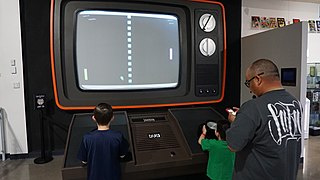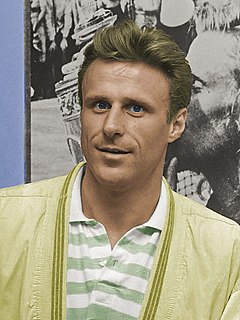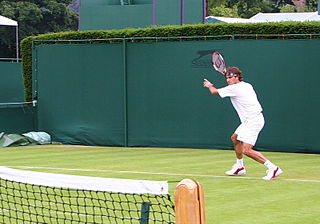
Super Mario Kart is a 1992 kart racing video game developed and published by Nintendo for the Super Nintendo Entertainment System video game console. The first game of the Mario Kart series, it was released in Japan and North America in 1992, and in Europe the following year. Selling 8.76 million copies worldwide, the game went on to become the fourth best selling SNES game of all time. Super Mario Kart was re-released on the Wii's Virtual Console in 2009, and on the Wii U's Virtual Console in 2013. Nintendo re-released Super Mario Kart in the United States in September 2017 as part of the company's Super NES Classic Edition.

Table tennis, also known as ping-pong, is a sport in which two or four players hit a lightweight ball back and forth across a table using small rackets. The game takes place on a hard table divided by a net. Except for the initial serve, the rules are generally as follows: players must allow a ball played toward them to bounce one time on their side of the table, and must return it so that it bounces on the opposite side at least once. A point is scored when a player fails to return the ball within the rules. Play is fast and demands quick reactions. Spinning the ball alters its trajectory and limits an opponent's options, giving the hitter a great advantage.

Street Fighter II is a competitive fighting game developed by Capcom and released for arcades in 1991. The sequel to the 1987 game Street Fighter, Street Fighter II adds multiple playable characters, each with their own fighting style, and features such as command-based special moves, a six-button configuration, a combo system, and competitive two-player multiplayer. It was the fourteenth Capcom game to use the CP System arcade system board.

Quake 4 is a military science fiction first-person shooter video game, the fourth title in the Quake series. The game was developed by Raven Software and published by Activision. Raven Software collaborated with id Software, the creators and developers of preceding Quake games. id Software supervised the development of the game as well as providing the id Tech 4 engine upon which it was built. Quake 4 went gold in early October 2005 and was released on October 18, 2005 for Microsoft Windows and later for Linux and OS X, as well as being a launch title for the Xbox 360. A special DVD Collectors Edition was released, including promotional material and the game Quake II with its expansions, The Reckoning and Ground Zero. The Xbox 360 version of Quake 4 is based on the Special Collectors Edition, and includes Quake II. On August 4, 2011 the game was made available through Steam.

Virtua Tennis is a 1999 tennis arcade game created by Sega-AM3. The player competes through tennis tournaments in an arcade mode. For the home console market the game was expanded with the introduction of the campaign mode. It was later ported to Dreamcast in 2000, and for Microsoft Windows in 2002. A Game Boy Advance version was also released in 2002.

Stunts is a 3D racing video game developed by Distinctive Software and published by Brøderbund in 1990. The game places emphasis on racing on stunt tracks and features a track editor. It is clearly influenced by the earlier arcade game Hard Drivin' and has many similar elements to the game Stunt Driver which was released the same year.

A lob in tennis is hitting the ball high and deep into the opponent's court. It can be used as an offensive or defensive weapon depending on the situation.
This page is a glossary of tennis terminology.
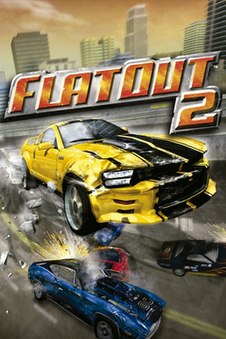
FlatOut 2 is a racing video game developed by Bugbear Entertainment and published by Empire Interactive. It is the sequel to the 2004 game FlatOut.

ESPN Baseball Tonight is a baseball video game for the PC, Super NES, Sega Genesis, and Sega CD.

Andre Agassi Tennis is a tennis video game released in 1992, starring tennis legend Andre Agassi. The game was released for the Super NES, Genesis, Master System and Game Gear. It enjoyed a much belated release for mobile phones.

Sampras Tennis 96 is a 1995 tennis video game developed by Codemasters. It is the sequel to Pete Sampras Tennis. Like its predecessor, it was one of the few titles released on the J-Cart format, which provided two additional controller ports for multiplayer games. The game was followed by Pete Sampras Tennis '97, which was released for the PlayStation and personal computers.

Cyber Knight is a science fiction Super Famicom and PC Engine role-playing video game that combines sci-fi space exploration with strategic robot combat. This game is intended for experienced role-playing gamers only. The random encounters are high even for a Japanese role-playing game with a mid-to-late 1992 Super Famicom release date and the combat sequences are extremely slow. The game was only released commercially in Japan, however there are a fan-translation from Japanese to English made by Aeon Genesis. Two years later, a sequel was released for this game titled Cyber Knight II: Chikyū Teikoku no Yabō.

Dream Match Tennis is a 2006 tennis simulation game developed by Bimboosoft, a company based in Saitama, Japan. Unlike other games in its genre, Dream Match Tennis was aimed to produce a more realistic depiction of the sport, requiring more skill from the player in order to direct their shots accurately.

David Crane's Amazing Tennis is a tennis simulation video game developed and published by Absolute Entertainment for the Super Nintendo Entertainment System and Sega Genesis consoles in 1992. The game was also made available for the Nintendo Super System. The SNES version got a worldwide release, while the Genesis version only saw a North American release.
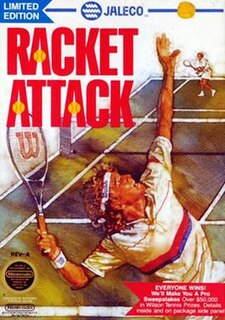
Racket Attack is a Nintendo Entertainment System video game about professional tennis. It was released in Japan as Moero!! Pro Tennis (燃えろ!!プロテニス), which the second game of the Moero!! sports series. The gameplay takes place in a ¼ overhead view tennis court with the score being present at all times and an audience of spectators being shown in multiple colors. The North American version features an endorsement from Wilson Sporting Goods.

Super Formation Soccer '95: della Serie A is an official licensed football video game that featured all clubs and footballers from the Italian Serie A and was released exclusively in Japan in 1995. It was licensed by Italian Football League and AIC. The game is based on the original video game Super Formation Soccer.
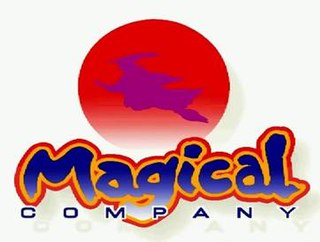
Magical Company ltd. (魔法株式会社), also known as Mahō, is a Japanese entertainment company.

